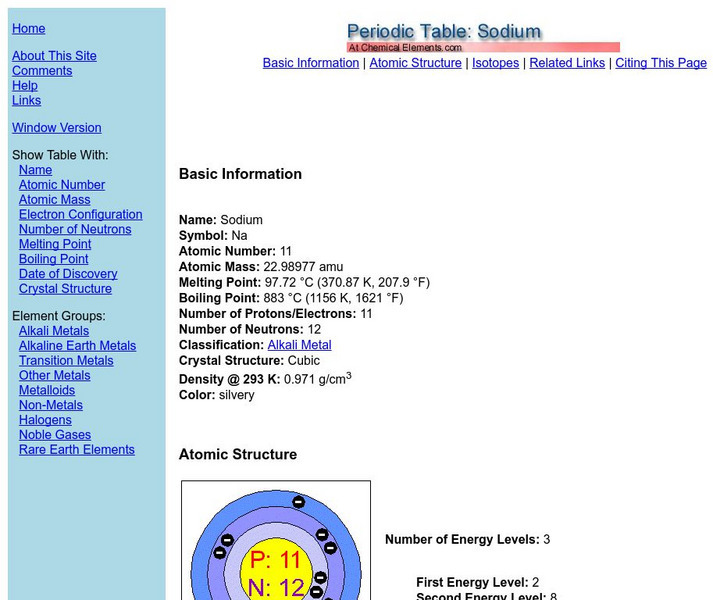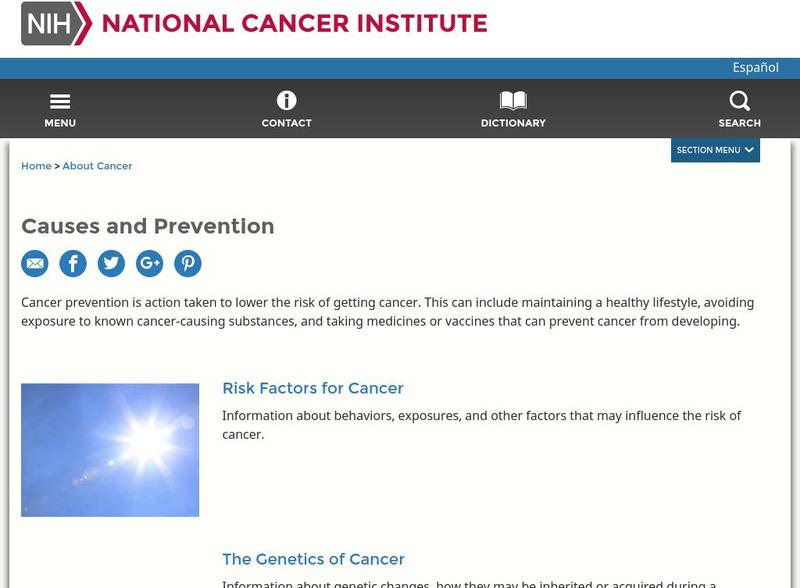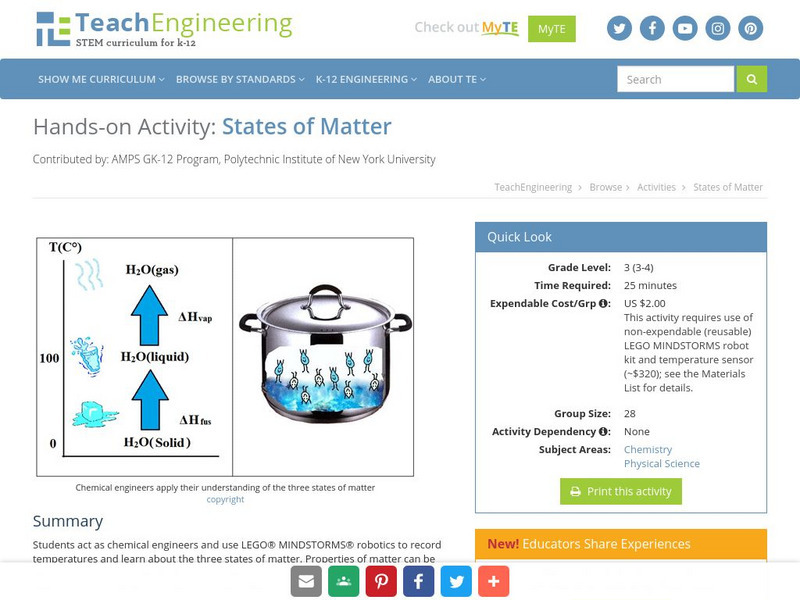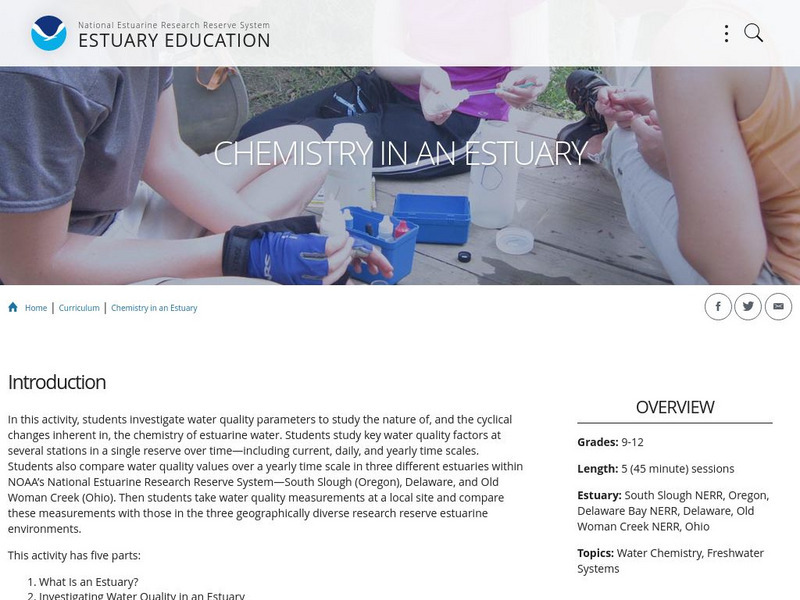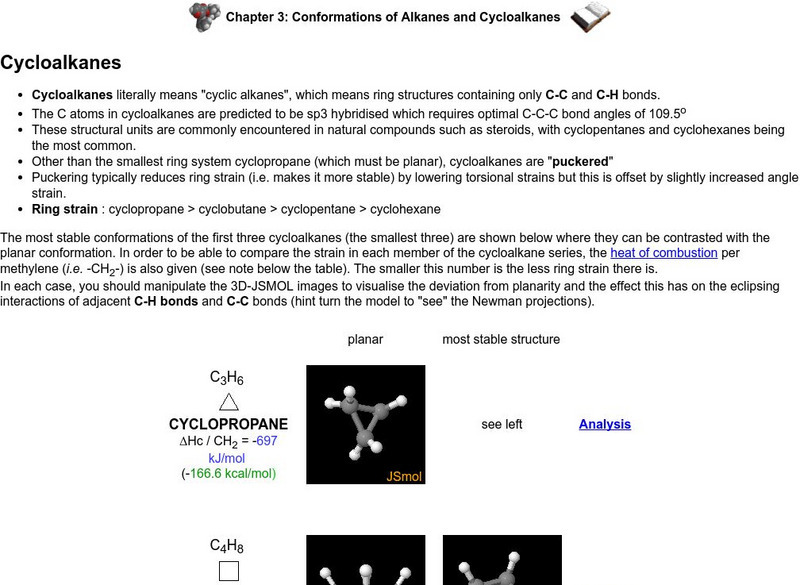Other
Chemical elements.com: Sodium
A site containing a good deal of elemental information. Information on each element includes atomic number, atomic mass, melting point, boiling point, density, isotopes and more.
University of Alberta
The University of Alberta: Nmr Spectroscopy
1HNMR theory begins in the nucleus of hydrogen. Complete this tutorial on the 1HNMR spectrum graph to learn about the number of equivalent hydrogens, b) the chemical environment of each hydrogen type and c) the number of neighbouring...
Encyclopedia of Earth
Encyclopedia of Earth: Nitrogen
Information about the element, Nitrogen, atomic number 14. Covers common chemical transformations, its physical properties, atomic properties, how abundant it is on the Earth, and details about health-related regulations. Also discusses...
Encyclopedia of Earth
Encyclopedia of Earth: Microbiology: Mutation
Explains what genetic mutation is, results of mutation, types, how scientists use it in research and in medicine, what it looks like at the molecular level, chemicals that can cause mutation, and frequency of occurrence. (Published:...
James Madison University
James Madison University: Igneous Rock Classification
This site explores the classification of igneous rocks. Content addresses classification based on color and texture, mineral composition, and chemical composition.
National High Magnetic Field Laboratory
Magnet Academy: Svante Arrhenius
Svante Arrhenius was born in Vik, Sweden, and became the first native of that country to win the Nobel Prize. The award for chemistry was bestowed to him in honor of his theory of electrolytic dissociation. Arrhenius also developed the...
CPALMS
Florida State University Cpalms: Florida Students: Water and Life
A tutorial focusing on how water is essential for life! Learn how water's chemical properties relate to their physical properties.
National Cancer Institute at the National Institutes of Health
Cancer.gov: Cancer Causes and Risk Factors
This site provides links to articles that deal specifically with many different causes of cancer, such as genetic, hormonal, or from a chemical that is inhaled or eaten.
TeachEngineering
Teach Engineering: States of Matter
Students act as chemical engineers and use LEGO MINDSTORMS NXT robotics to record temperatures and learn about the three states of matter. Properties of matter can be measured in various ways, including volume, mass, density and...
NOAA
Noaa: Estuaries 101 Curriculum: Chemistry in an Estuary
This activity introduces students to the complex chemistry of estuarine water. Students investigate how chemical and physical water quality factors-pH, temperature, dissolved oxygen, and salinity-change and interact over varying time...
eSchool Today
E School Today: Your Revision Notes on Rocks
Covers the three main types of rocks, different weathering processes, erosion, and the rock cycle.
University of Alberta
The University of Alberta: Infrared Spectroscopy
Complete this interactive tutorial and learn about interpreting the infrared spectrum ("I" "R") that provides information about the functional groups in a molecule. Included are 12 labs and a quiz.
Sophia Learning
Sophia: Hydrogen Bonding Definition: Lesson 1
This lesson will define hydrogen bonding. It is 1 of 2 in the series titled "Hydrogen Bonding Definition."
PBS
Pbs Nova: Pyrotechnically Speaking
Meet chemistry professor Dr. John Conkling in this interview from the NOVA Web site and learn why fireworks are his passion.
University of Calgary
Univeristy of Calgary: Cycloalkanes
A brief description of cycloalkanes. Properties, chemical make-up, and structure provided. Brief introduction to nomenclature of cycloalkanes and generic formula. Interactive piece requires x-pdb plug-in.
Soft Schools
Soft Schools: Chemistry: Matter: Mixtures Quiz
A ten-question quiz on the chemical properties of mixtures.
Alabama Learning Exchange
Alex: Pass It Down
This lesson, Pass It Down, integrates science and math into two consecutive hands-on genetics activities that should be embedded within an existing genetics unit suitable for biology students. The results of each activity will be...
Khan Academy
Khan Academy: Basal Metabolic Rate and Energy Expenditure
A test prep practice question for the MCAT Chemical and Physical Foundations of Biological Systems Passages.
PBS
Pbs Learning Media: Understanding Air: Climate Change and Modeling Combustion
In this lesson, students learn about the components of air and the chemical reactions that release carbon dioxide into the atmosphere and explore the connection between carbon dioxide, climate change, and environmental health.
University of Alberta
The University of Alberta: Detective O Chem
It has been discovered that an indigenous Australian plant possesses a compound that shows antiviral activity against the H5N1 virus. Your mission, should you accept it, is to identify the compound before a rival pharmaceutical company...
Georgia Department of Education
Ga Virtual Learning: Geology: Surface Processes
In this interactive tutorial, you will learn about the types of weathering and erosion that rocks and landforms undergo. This will lead to a discussion of soil and the types of soil. Lastly, you will learn about mass movements of soil,...
US Environmental Protection Agency
Epa: Secret of Bog Creek
This site has a user guided story about a bog that has been a secret dumping ground for waste.
US Environmental Protection Agency
Epa: Mercury
This site provides a user navigated slide show with animations providing basic information about the element Mercury.


